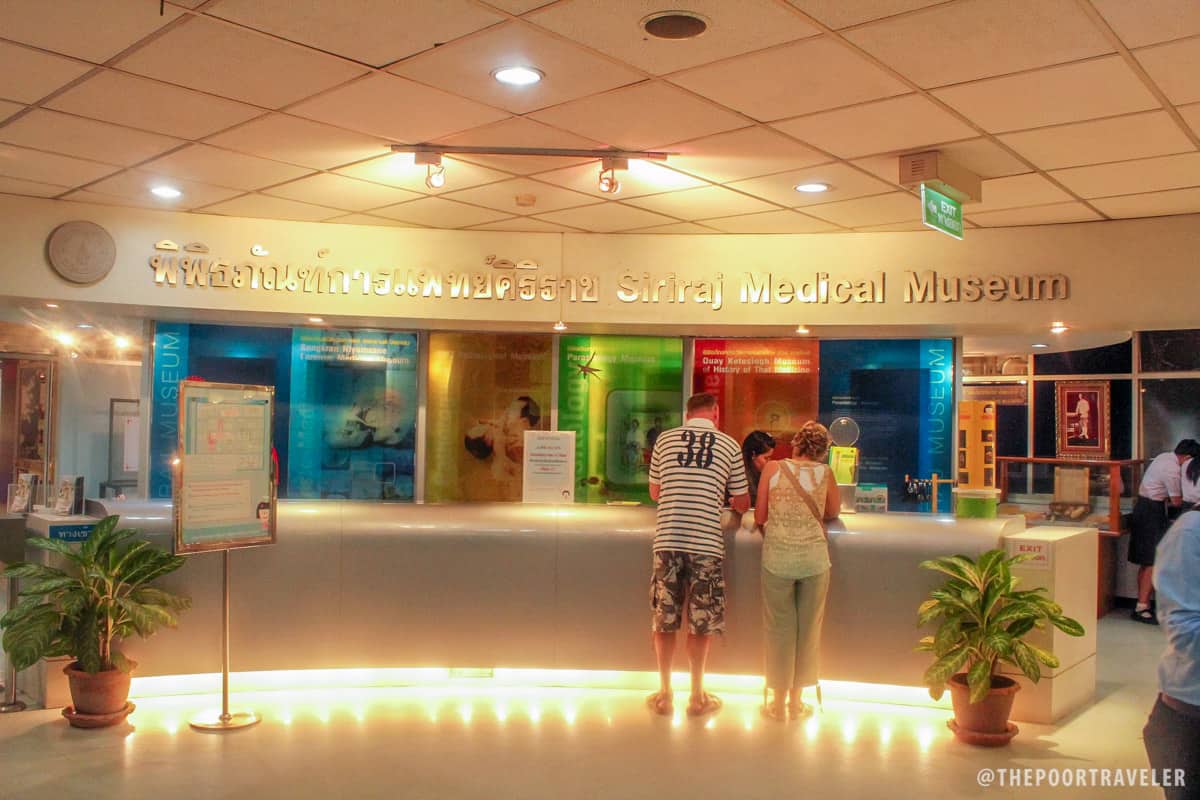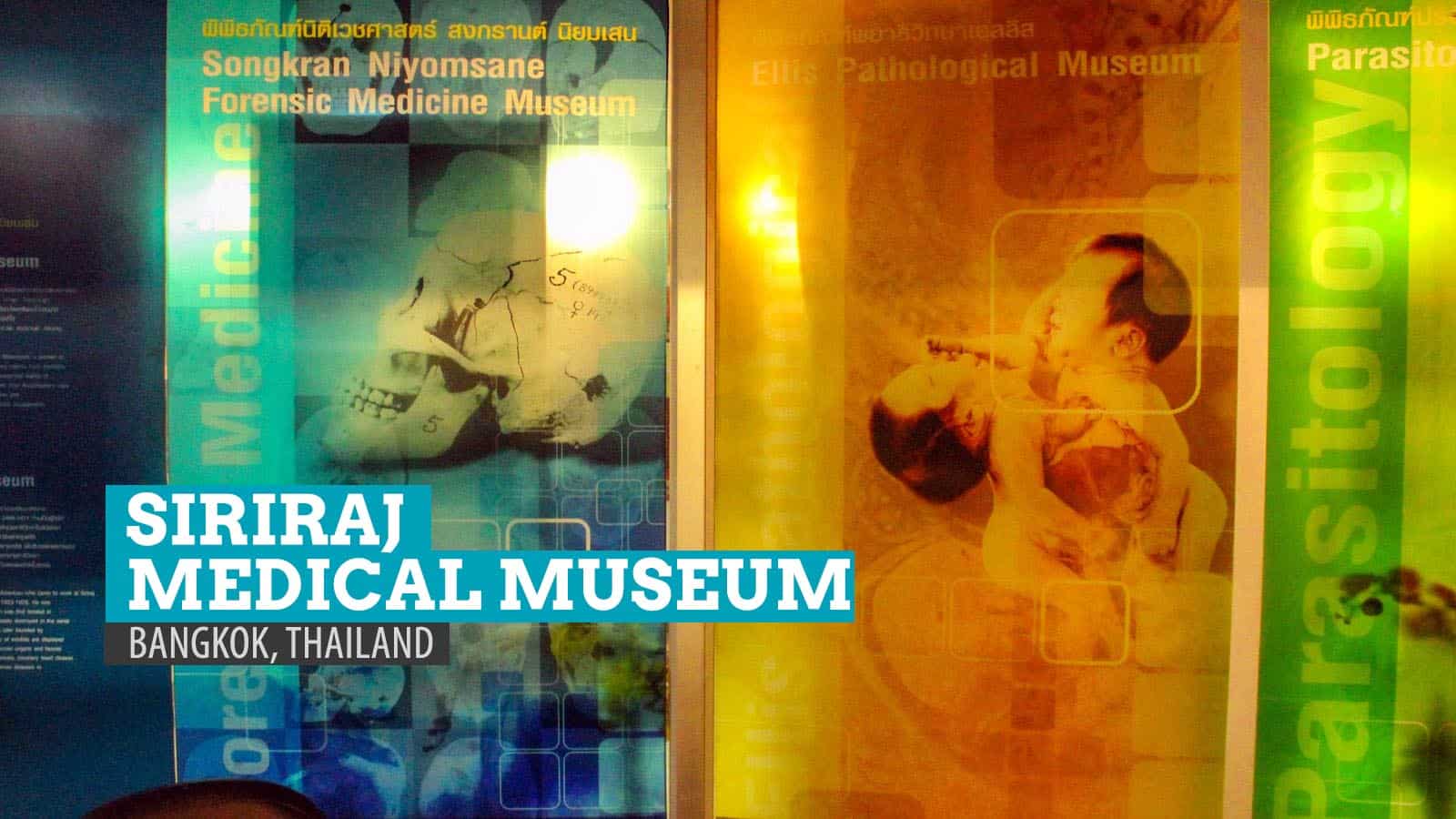2012 • 12 • 5
Final Destination. It was the first thing that entered my head as soon as I stepped into the Forensic Pathology section of Siriraj Medical Museum. The wall right after the entrance displays images and body parts of victims who died horrible, horrible deaths — from brutal murders to freak accidents. But as one adage goes, it was just the tip of the iceberg. As these pictures and specimens ushered me deeper into the place, I was taken on a ride into a world that reminded me of the genres of movies that I have loved so much — forensic, detective, suspense, and above all, gore. The only difference was, all these happened in real-life. And that’s what makes it more horrifying.
The Museum of Death
Also known as the Museum of Death, the Siriraj Medical Museum is a paradise for those into dark tourism. Operated by Siriraj Hospital, the first Western medical center in Thailand, it houses a huge collection of artifacts gathered in the 120 years of the hospital’s existence and service as a pioneer in the medical field in the country. These artifacts are showcased in six separate permanent exhibits inside the museum namely:
- Prehistoric Museum & Laboratory
- Congdon Anatomical Museum
- Parasitology Museum
- Songkran Niyomsane Forensic Medicine Museum
- Ellis Pathological Museum
- Thai Traditional Medicine Museum
My three favorite sections are Forensic Pathology, Congenital Disorders, and Parasitology. In fact, I barely remember anything about the other exhibits anymore, but these three stuck with me and haunted me even a few weeks after my visit. Even when I was already in Laos, I still could not stop thinking about it.

What’s Inside
Unfortunately, photography is not allowed inside. I wish I could post the hair-raising specimens exhibited at the museum, but I didn’t want to break the rules. But do a quick Google image search so you have an idea of what to expect inside.
One of the most notable “items” on display in the Forensic Pathology section is the mummified body of Si Ouey Sae Urng (Si Quey), Thailand’s Hannibal Lecter. Regarded by many as modern Thailand’s first serial killer, Si Quey was a cannibal who victimized children in the 1950s. He was executed and his remains have since been kept at the hospital.
In another corner is an exhibit highlighting the role of Siriraj Hospital in the rescue and recovery operations during the catastrophic Asian tsunami in 2001.
The Congenital Disorders area was the second area I explored. The place is small but packed with preserved remains of babies. Most of them are conjoined or deformed. It was probably the saddest corner of the whole museum. It was depressing to realize that these babies were not given enough time to live and experience the world more.
The Parasitology section was the end of the line for me. It was too much. I felt like if I stayed a little bit longer at the place, I wouldn’t feel comfortable eating anything anymore. The models were so realistic and it made me wonder just how much parasites I have now in my body and whether they were harmful. In the middle of the site was an enormous 75m-wide scrotum (yep, scrotum), dissected from an elephantiasis victim.
Yes, the museum is shocking and gory and can give Ripley’s a run for its money, but it is also highly educational. The artifacts are presented in a way that guests can pick up something. For example, they did not just put the giant scrotum on display; before you reach it, you will be bombarded first by information on how one falls victim to these parasites. Another good example is the preserved head pierced by a gunshot. The head is halved vertically that visitors can examine the path of the bullet until it exited the head. While I do not recommend it to kids, I believe adults, especially those who are fans of gore and crime literature and studies, would surely enjoy the terror that lives in this building.
The place is a fusion of the most terrifying movies and TV shows I had seen. There’s a big serving of CSI and a sprinkle of Silence of the Lambs. And yes, Final Destination, too. Coincidentally, this was my final destination, my last stop in Bangkok. I walked out of that horror house totally bothered. It was indeed a seriously disturbing experience but weirdly enlightening.
Later that day, I would be boarding an overnight train to Chiang Mai. I was alone in my cabin and all I could do was sleep. At one point I had a terrible nightmare. Guess what it was about.
Siriraj Medical MuseumOpening Hours: Monday-Saturday,9am-4pm
Entrance Fee: THB 200
Email Address: sirirajmuseum@yahoo.com
Contact No.: +6624197000 ext. 6363How to get there: Board the SkyTrain (Silom Line) to S6 Saphan Taksin Station, take Exit 2, and hop onto a Chao Phraya Express Boat to Siriraj Pier N10 or Tha Rot Fai Pier, both on the west side of the river. Walk a couple of blocks into the hospital complex. Follow the signs to Adulyadej Vikrom Building. The museum is on the second floor. It is quite hard to find and the area can get crowded especially during rush hour, but once you reach the hospital complex, just ask anyone who looks like they work or study there. Tell them you’re looking for the forensic museum and they’ll know.
Update: I revisited this museum in July 2014. Not much has changed. Well, except the admission fee which surged from THB 40 to 200.



























Interesting yet creepy place. I want to go there before I die. T_T
Yeah – Jamsic. But be careful….it might be your “Final Destination”!